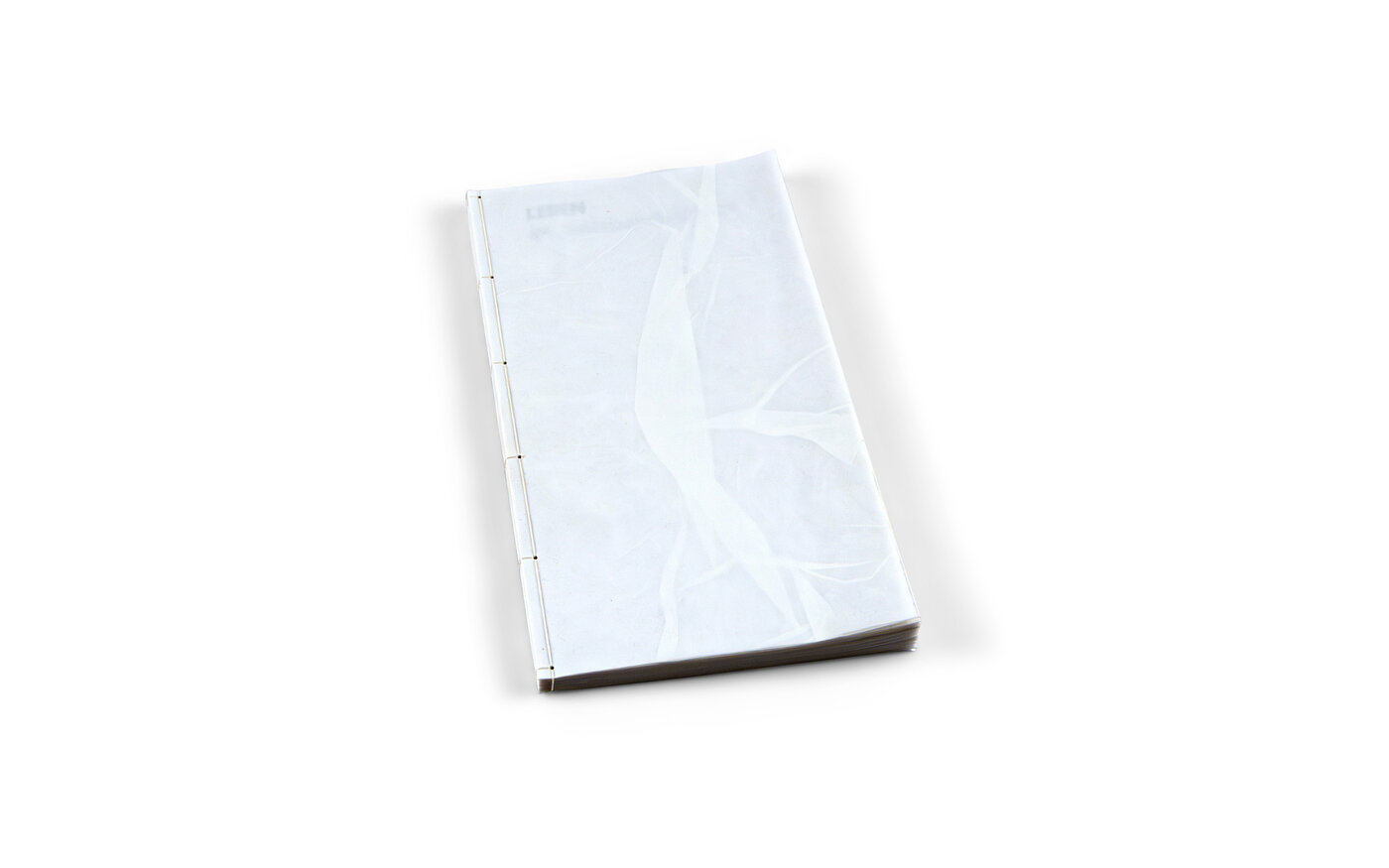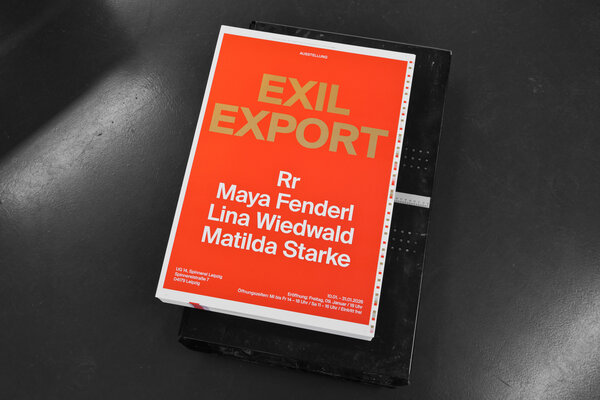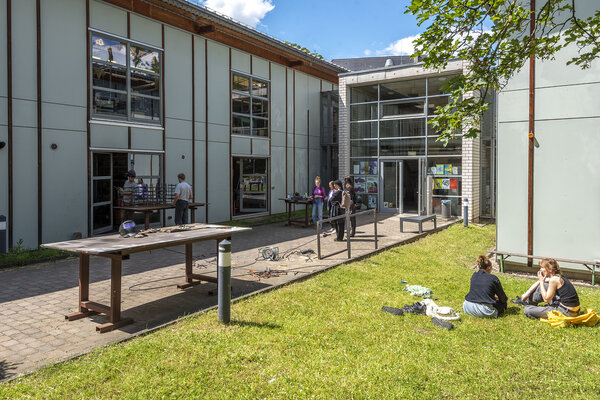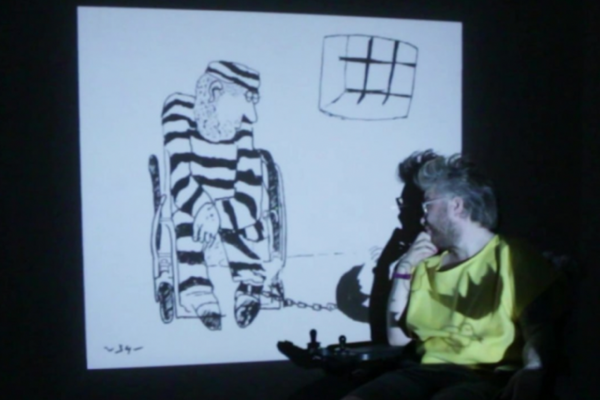Papier ist in der Regel nicht an und für sich interessant, sondern als stiller, am hermeneutischen Prozess unbeteiligter Bedeutungsträger. Daher sind Knicke und Falten normalerweise unerwünschte Makel: Sie lassen augenscheinlich werden, dass Papier – um überhaupt als Medium funktionieren zu können – notwendigerweise einen Körper braucht; und dass dieser – wie alles Körperliche – verletzlich und vergänglich ist. Das Papier für dieses Buch hat Runa beim Schöpfen absichtlich in Falten gelegt. Es wird von Transparentpapier umschlossen, auf dem sich eine typografische Inszenierung von Wisława Szymborskas Gedicht »Leben im Handumdrehen« abspielt. Papier und Text sind hier gleichberechtigt; sie verstärken sich gegenseitig in ihrem poetischen Hadern mit dem Da- und Sosein.
Japanische Bindung | 15 × 28 cm | Auflage: 6 | Handgeschöpftes Papier aus Abacáfasern, Bleisatz
\
Paper is usually not interesting in and of itself, but rather as a silent carrier of meaning that remains uninvolved in the hermeneutic process. This may be why creases and folds are generally regarded as flaws: they are obtrusive reminders of the physical body that sustains the media function of a page; and thus of the uncomfortable truth that this body – like everything that is embodied – is vulnerable and transient. Runa deliberately folded the paper in the process of hand making it for this book. It is enclosed by transparent paper, bearing a typographic interpretation of Wisława Szymborska’s poem »Life While-U-Wait«. Paper and text are equals in this book; they reinforce each other in their poetic grappling with being and becoming.
Japanese binding | 15 × 28 cm | edition of 6 | handmade paper from abaca fibers, letterpress printing





















